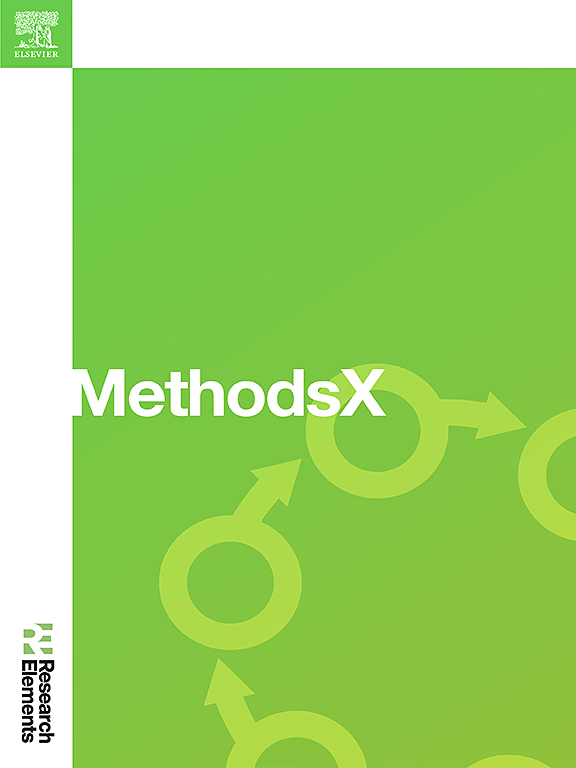A method for modifying carbonaceous materials with manganese carbonate to module the formation of singlet oxygen via activation with Peroxymonosulfate
IF 1.6
Q2 MULTIDISCIPLINARY SCIENCES
引用次数: 0
Abstract
This approach examines several agriculture wastes (shell coconut, pseudo-steam banana, potato) as precursors of carbonaceous materials to produce 1O2. The materials were modified with manganese carbonate at 800 °C and then, characterized using DLS (Dynamic Laser Scattering), BET (Brunauer-Emmett-Teller) Method, and zeta potential. Subsequently, the materials were activated via-peroxymonosulfate (PMS, HSO5), and a scavenger to evidence the singlet oxygen formation was used. Acetaminophen, sulphamethoxazole, and losartan were employed as the pharmaceutical targets, evaluating the effects of ROS (reactive oxygen species) in the acetaminophen degradation processes. The methodology of computational calculations was developed to obtain HOMO-LUMO for all systems of modified and unmodified materials in the presence of PMS and acetaminophen to understand both the adsorption and the carbocatalysis processes. This method allows an understanding of the presence of manganese carbonate in thermal synthesis, which determines the modulation of reactive oxygen species depending on the pH of the treatment. This method is significant as follows:
- •Low-cost carbonaceous materials activated with PMS demonstrated significant efficiency in degrading organic molecules, utilizing singlet oxygen as the primary oxidant.
- •Theoretical computational approaches investigate the interaction between material and molecule.
- •The role of carbonate ions in influencing singlet oxygen production in materials derived from residual biomass was examined.

一种用碳酸锰改性碳质材料,通过过氧单硫酸盐活化使单线态氧的形成模块化的方法
该方法研究了几种农业废弃物(椰壳、伪蒸汽香蕉、土豆)作为碳质材料产生1O2的前体。用碳酸锰在800℃下对材料进行改性,然后用DLS(动态激光散射)、BET (brunauer - emmet - teller)法和zeta电位对材料进行表征。随后,通过-过氧单硫酸盐(PMS, HSO5)和清除剂对材料进行活化,以证明单线态氧的形成。以对乙酰氨基酚、磺胺甲恶唑和氯沙坦为药物靶点,评价活性氧(ROS)在对乙酰氨基酚降解过程中的作用。采用计算计算的方法,得到了在PMS和对乙酰氨基酚存在下改性和未改性材料的所有体系的HOMO-LUMO,以了解其吸附和碳催化过程。这种方法允许理解碳酸锰在热合成中的存在,这决定了根据处理的pH值对活性氧的调制。•用PMS活化的低成本碳质材料在降解有机分子方面表现出显著的效率,利用单线态氧作为主要氧化剂。•理论计算方法研究材料和分子之间的相互作用。•研究了碳酸盐离子在影响残留生物质衍生材料中单线态氧生产中的作用。
本文章由计算机程序翻译,如有差异,请以英文原文为准。
求助全文
约1分钟内获得全文
求助全文
来源期刊

MethodsX
Health Professions-Medical Laboratory Technology
CiteScore
3.60
自引率
5.30%
发文量
314
审稿时长
7 weeks
期刊介绍:
 求助内容:
求助内容: 应助结果提醒方式:
应助结果提醒方式:


